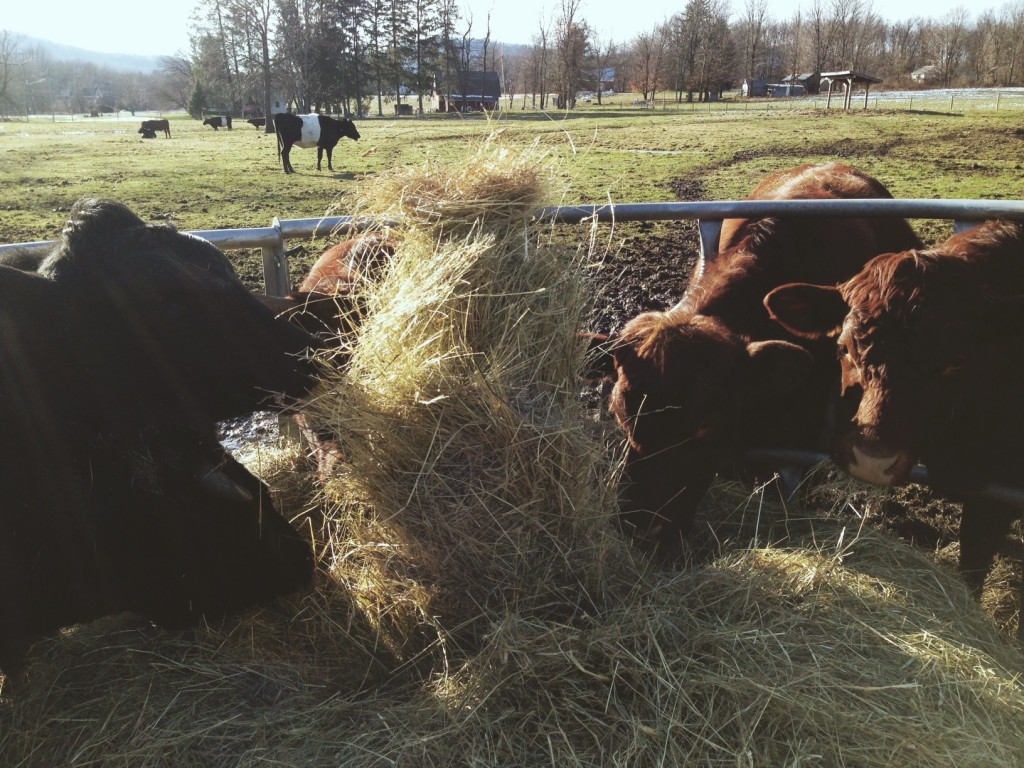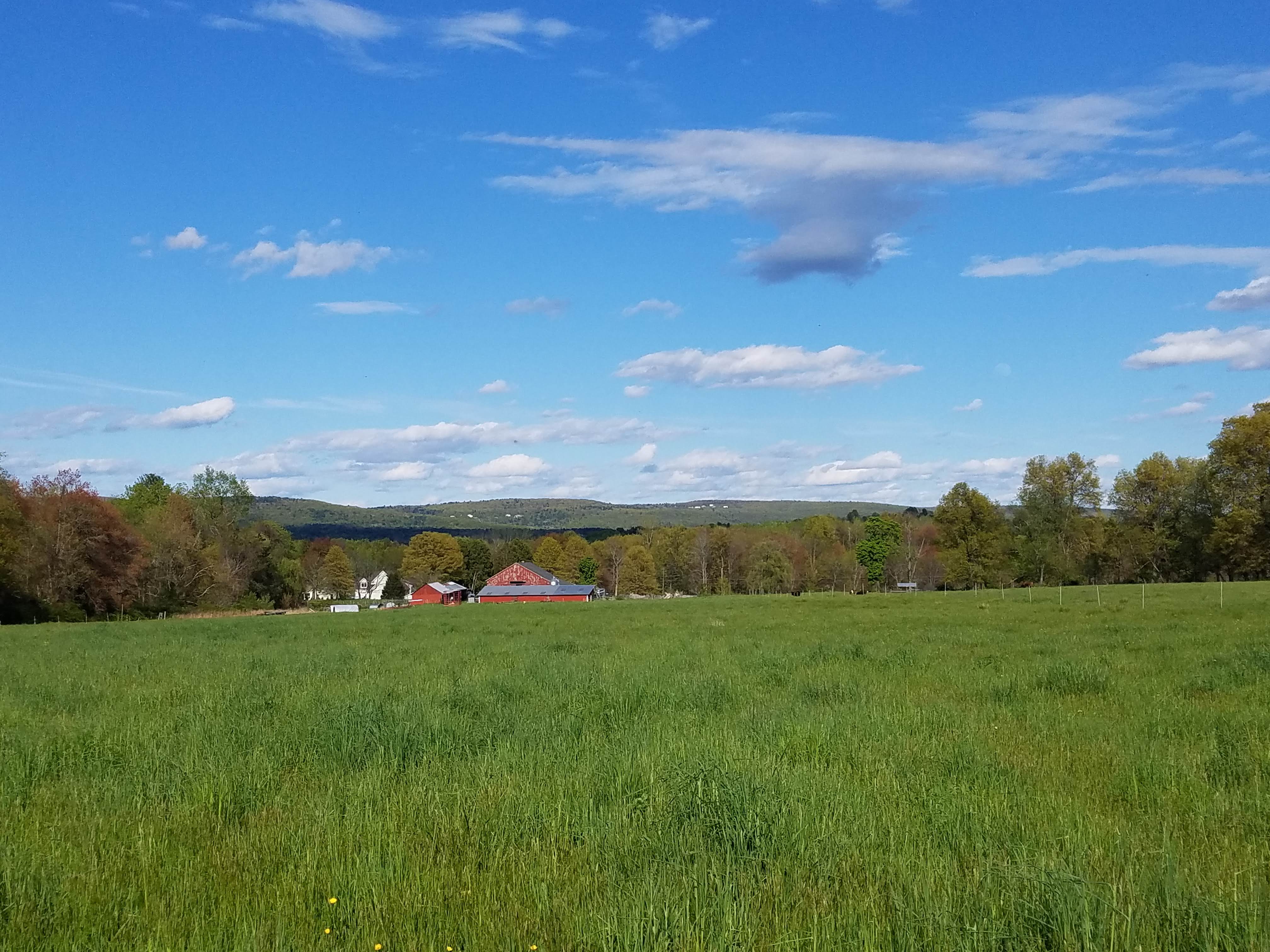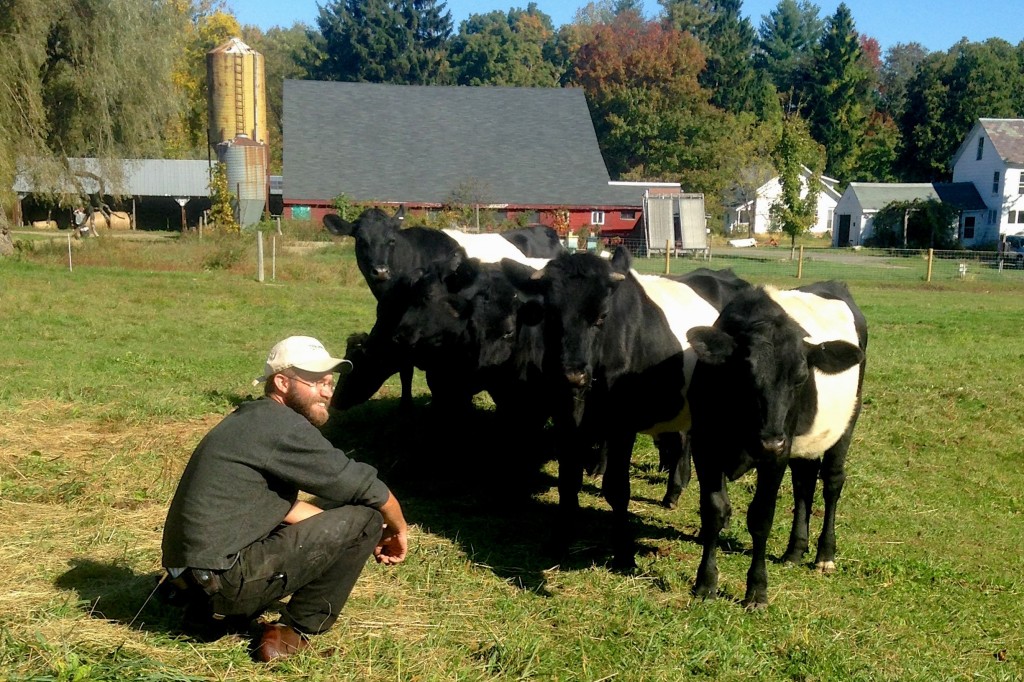Over the next few months, we will be featuring a series of interviews here on the Food, Farm, and Sustainability Blog that focus on the people behind Hampshire’s Healthy Food Transition. From local farmers in the field to seasoned chefs in the campus kitchen, we will explore the faces behind our food. Today we feature Pete Solis, Livestock and Pasture Manager at the Hampshire College Farm. To read our first feature with Jim Lachance, the General Manager of Bon Appetit Dining Services at Hampshire College click here »
Pete Solis started as the Livestock and Pasture Manager at the Hampshire College Farm this fall. Previously, Pete ran his own farm in Easthampton, Massachusetts, where he raised Devon beef cattle, heritage pigs, chickens, and turkeys. Mockingbird Farm was created around the idea of providing well-husbanded, well raised and delicious local meat to the local community through CSA shares and Farmers Markets. The Hampshire College Farm acquired Pete’s Devon Cattle for a pilot meat CSA program. You can see the ginger colored cows mingling with our black and white Dutch Belted in the front pasture.
How did you come into farming as a profession?
“It started out as a way to feed my own family. I had been a vegetarian/vegan for a number of years because of my disgust at large scale animal husbandry. At the time, there were few, if any, options for well raised meats. So, I decided to raise a couple of pigs and some meat birds. I had a great time doing it, and I learned a lot. The following year, I decided to make it a business and we raised 25 pigs and 800 meat birds. We bought a bunch of cattle and started in on turkeys and laying hens, too.”
What can you tell us about the Devon Cattle that you brought with you to Hampshire?
“These Devons come from a beef line, which means they put more of their energy into making muscle, whereas dairy cattle tend to focus more on milk production. Beef cattle just look more “beefy,” whereas dairy cattle have a more boney look to them. Generally Devons are calm, curious. They have wonderful maternal instincts and calve easily. I find them to be exceptionally pretty to look at, with their cherry red coats.
Devons are one of the oldest breeds of cattle, originating out of England. They were some of the first cattle brought to America, and New England was once covered with red cows. The breed almost died out, as they are unsuitable for use in a grain-based feedlot operation. However, with renewed interest in grass-fed beef, the breed is experiencing some significant renewed interest.
The red Devons are about 14 months old and are pastured alongside the Dutch Belted breed (currently in the front pasture along West Street).
 Dutch Belted cows (left) share some lunch with the Devons (right)
Dutch Belted cows (left) share some lunch with the Devons (right)
What was the process of combing the herd of Devons with the Dutch Belted herd?
“We ran a temporary electric fence to separate the two herds. This way, they could see, smell, and touch noses with each other without being able to tussle around for dominance. After about a week, we took down the fence and let them hang out with each other. There was a little bit of head butting, but everyone seems to be getting along well.”
Why do you like working with animals?
“They’re fun. I like figuring out how they think. I like taking care of things. There’s also a lot of room for some novel innovations in small-scale animal husbandry. It’s rewarding to come up with and implement some new device or system that makes work easier and the animal’s life better.”
What is your favorite time of day on the farm?
“Sometimes dawn is great, but other times it comes by way too early. I like when I have finished a job or task and I’m pleased with how it worked out–the world gets a little brighter with well-done work.”
What is your favorite animal – domesticated and/or wild?
“A hard choice! Pigs are fantastic. They are fun to work with and fun to watch (case in point below). I think they are one of the more understandable domestic animals. They seem to have good scrutable reasons for everything they do. I’m also fascinated with giant pacific octopuses–how cool is it that a significant portion of your brain is located in each of your arms? It’s neat to think about how differently they may perceive the world.”
Imagine you are cooking a local foods feast for friends – what is on the menu?
“We’ll start off with some nice charcuterie from my basement: some proscuitto, some saucisson sec, and some lardo with a good selection of cheeses. A nice salad with some bitter greens. It’s hard to beat pulled pork with sweet corn, grilled summer squash, and watermelon and mint salad. Eaten outside with good company. Good beer, too….now I’m hungry!”
Let’s extend a warm welcome to Pete Solis, the newest Face Behind Your Food here at Hampshire College!


